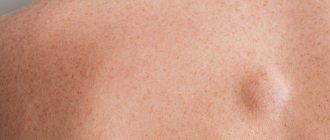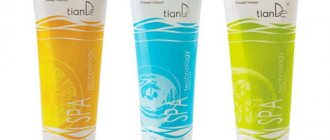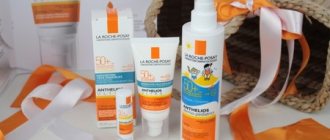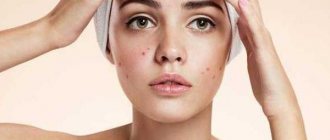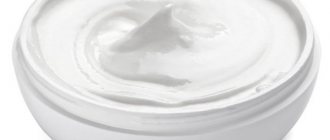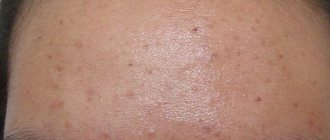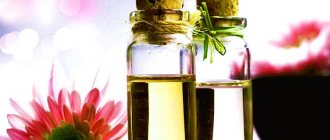Last update: 02/27/2021
Author of the article:
Menshchikova Galina Vladimirovna
Dermatovenerologist, trichologist, candidate of medical sciences, member of the Association “National Society of Trichologists”
We exfoliate the face and body, but what about the scalp? The skin is the largest human organ, but many people forget that the scalp needs care no less than the face or body. Meanwhile, trichologists draw the attention of women to the need for deep cleansing in this area. Let's talk about the benefits of peelings for the scalp and share recipes for scrubs.
Why do you need to cleanse your scalp?
Everyone knows that the upper layer of skin (epidermis) is constantly renewed, its upper layers are exfoliated. The body is helped to get rid of dead cells with washcloths and scrubs. But the scalp also needs cleansing procedures.
Dust particles, hair styling products, dead epidermal cells - all this accumulates on the surface of the scalp every day. Partially they fall off, but the rest remains on the surface, mixing with sebum, contaminating the pores, promoting the formation of dandruff and sebaceous plugs, etc.
The process of skin renewal is irreversible, and new cells are formed in place of dead cells, but gradually the skin becomes more and more difficult to breathe. Therefore, scalp cleansing is necessary.
Benefits of cleansing the scalp:
Protection against dandruff.- Regulation of fat metabolism.
- Activation of hair growth.
- Cleansing of dead cells.
- Increased blood supply to hair follicles and scalp.
- Removal of sebum and dirt, styling, silicone.
- Protection against hair loss due to stimulation of hair follicles.
- Increasing the effect of medicinal shampoo, masks, balms.
Types of peeling
There are several types of exfoliation that are used, including for the scalp:
- mechanical - scrubbing with abrasive agents;
- chemical - peeling with acids (glycolic, salicylic, lactic, mandelic, etc.);
- hardware - in relation to the scalp, procedures such as gas-liquid and galvanic peeling are carried out.
Mechanical cleaning involves the use of compounds with natural abrasives, which provide exfoliation.
If we talk about chemical peeling, then only superficial cleaning is used for the scalp. To avoid damaging the hair follicles, preparations with a low concentration of active acids are used. A weak acid solution gently exfoliates dead cells from the surface without penetrating into the deeper layers.
Gas-liquid peeling is a non-contact procedure in which the effect occurs using compressed gas and liquid in the form of a therapeutic solution. The method is based on the use of a high-speed two-phase flow of medical gas (carbon dioxide and oxygen) and fine liquid. In addition to exfoliation and cleansing, the beneficial effect of the procedure is achieved through pressure jet massage, cryotherapy and oxygenation. Jet gas-liquid skin treatment is suitable for those who wish to conduct non-injection mesotherapy. For this procedure, vitamins, peptides, hyaluronic acid or antibiotics are used.
Galvanic peeling is a procedure that combines the effects of galvanic current with peeling serums. It is performed with a special comb with electrode teeth using a composition previously applied to the skin.
Indications and contraindications for the procedure
Scalp peeling is indicated for:
- seborrhea;
- dandruff;
- oily hair;
- hair loss.
By the way, this procedure is indicated for both women and men. Without a doubt, exfoliation is very beneficial, but it has limitations. Peeling cannot be done in the following cases:
- microcracks and other damage to the skin;
- sensitive skin;
- eczema, psoriasis;
- professional chemical peels are not recommended during pregnancy and breastfeeding;
- allergic reaction to acid.
Professional peelings
Today, many well-known cosmetic brands produce various professional peelings for the scalp. The composition of the products may include AHA acids, natural oils and extracts. Exfoliating products are available in the form of creams, mousses, and gels. They can be freely purchased at a beauty salon, in specialized stores or at a pharmacy and used independently at home.
Modern dermatological peelings for the scalp are not only a means of chemical exfoliation, but are also used in the prevention and correction of seborrhea, hair loss and other problems. This is why peeling in hair restoration salons and trichology clinics is often used to prepare the skin for more specialized treatments such as mesotherapy.
How to do scalp and hair peeling in a salon
You can sign up for a chemical peeling procedure for your head at a salon or cosmetology clinic that has a trichology department. At the clinic, the trichologist will initially diagnose the scalp and hair condition.
Depending on the client’s skin type and the existing problem, the specialist will select the optimal drug for chemical exfoliation in the required concentration. The composition is applied along the partings to a damp and clean scalp and hair roots, for which the hair is first washed with a neutral shampoo. After 5-15 minutes, a neutralizer is applied. Then the hair is washed and dried with a hairdryer.
A specialist can suggest a mask for your hair type for the final stage. It is possible to combine the procedure with a head massage.
As a rule, salon procedures are recommended to be carried out in a course. If you don't want to spend money and time visiting salons, this treatment can be done at home.
Home peeling recipes
There is nothing easier than preparing scalp peeling at home. The easiest way to quickly cleanse the scalp of impurities and sebum is to use sea salt, which is rich in various microelements: iodine, calcium, iron, sodium, zinc, etc. But other abrasive components can also be used: table salt, sugar, coffee, soda . To prevent irritation and dryness from peeling, softening and moisturizing ingredients are added to the scrub, such as oil, kefir, egg yolks, etc. With such cleansing, the scalp will also receive nourishment.
Cleansing the skin with scrubs at home does not require large financial costs, does not take much time, and is technically very simple.
General recommendations:
- For salt peeling, choose finely ground salt, because large fractions can severely scratch the skin. Coarse salt can be ground in a blender or coffee grinder;
- apply peeling only to damp hair and exclusively in the root zone;
- wash your hair after peeling, not before;
- if the homemade scrub contains nutritional components, after the massage it can be left on the hair as a mask for 10-15 minutes with insulation with a cap and towel;
- for oily hair, the optimal frequency of the procedure is 2 times a month; for dry hair, it is enough to scrub once a month;
- Calculate the amount of ingredients for a homemade scrub depending on your hair length.
Be careful: dyed hair from the scrub may lose its color brightness; it is better to use store-bought peelings for it.
Recipe 1. With salt
- 1 tbsp. l. finely ground sea salt
- water
- 3 drops essential oil
Combine sea salt and room temperature water in a 1:1 ratio, stir until the consistency of liquid sour cream. Instead of water, you can use hair balm; give preference to natural balms. Add a couple of drops of essential oil suitable for your problem. For example, lavender, lemon, and tea tree oils are recommended for oily hair and dandruff; jasmine, chamomile or rose oils are suitable for dry hair. Apply the mixture gently along the partings and then massage the skin for a few minutes. After this, wash your hair as usual.
Recipe 2. With sugar
- 1 tsp. Sahara
- ½ tsp. olive oil
Mix the ingredients and massage your scalp with this mixture for a few minutes, then rinse.
Recipe 3. With clay
- 3 tbsp. l. finely ground table salt
- 2 tbsp. l. any clay, for example blue
- 1 tbsp. l. Water
Combine salt and clay and add water to the container. The resulting mixture is applied to the scalp with massage movements, then rinsed off.
Recipe 4. With coffee
- 2 tsp. coffee grounds
- 1 egg yolk
- 1 tsp. liquid honey
- 1 tsp. lemon juice
Apply a mixture of these ingredients to your scalp with massaging movements. Leave on for a few minutes, then rinse with warm water and organic shampoo. To prepare this scrub, you can use coffee grounds, coffee cake or ground coffee. The grounds and cake have a softer, more delicate effect.
Please note: coffee is a natural dye, so fair-haired girls are advised to choose a different scrub to avoid darkening of the roots.
There are many other homemade hair peeling recipes. Choose the one you like best, or come up with your own: the main thing is to dilute the abrasive with a liquid (water, herbal infusions, green tea, mineral water); you can add a few drops of essential oil suitable for your problem to any recipe.
To consolidate the effect, use high-quality hair cosmetics, preferably with the most natural composition. For example, shampoo, conditioner and care mask can be selected from the ALERANA® line. Shampoos and hair strengthening balm contain natural oils and growth stimulating extracts, as well as other useful components necessary for nourishing and restoring hair, the effectiveness of which has been proven in clinical studies. ALERANA® intensive nutrition mask, enriched with wheat proteins, plant extracts, jojoba oil, nourishes and heals hair follicles and hair along the entire length.
Cleansing the scalp while nourishing and restoring the hair will give the best results!
Removal of dead skin
There is a phenomenon of thickening of the epidermis - hyperkeratosis . In this case, there is an increase in the synthesis of keratin protein, which accumulates in the upper stratum corneum of the skin. The cells stick together and normal exfoliation of keratinized cells does not occur.
In this case, you also need to use chemical peels with salicylic, malic, and citric acids. They:
- clean the surface of the head from “glued” horny scales;
- improve blood circulation and tissue nutrition;
- speed up regeneration processes.
Hyperkeratosis is a systemic disease, so treatment is only under the supervision of a doctor.
How to use a scrub at home
Let us remember that the scalp is very delicate. The sebaceous glands are responsible for moisturizing and controlling whether the area where the hair is located is dry or oily. To decide what kind of scrub you need, you need to find out your skin type. Based on this, a combination of natural ingredients is then selected
Recommendations for use:
- before applying peeling, it is recommended to rinse your hair to remove mousses, styling gels or any other cosmetic product;
- the scrub is rubbed into the skin with your fingertips in a circular motion without much effort;
- after the scalp area has been massaged, rinse your hair thoroughly;
- salt scrubs are not applied to dry hair roots - such actions can cause hair brittleness and hair loss;
- salt is not applied to the hair itself, it causes dryness;
- at the end, to moisturize, it is recommended to apply 4-5 drops of jojoba oil or magnesium oil to the hair, paying more attention to the ends;
- It is advisable to grind the salt in a coffee grinder, otherwise there is a risk of scratching the skin.
A mask with Dead Sea salt, especially Dead Sea salt, penetrates deep into the hair structure, strengthens and revitalizes its roots, restores vitality and prevents hair loss.
Dead Sea salt is known to dry out the skin if used too often. When treating scalp acne, it is recommended to use sea salt once a week.
We should not forget that acne can be a symptom of serious health problems, so it is better to consult a dermatologist. The sooner you start treatment, the better.


